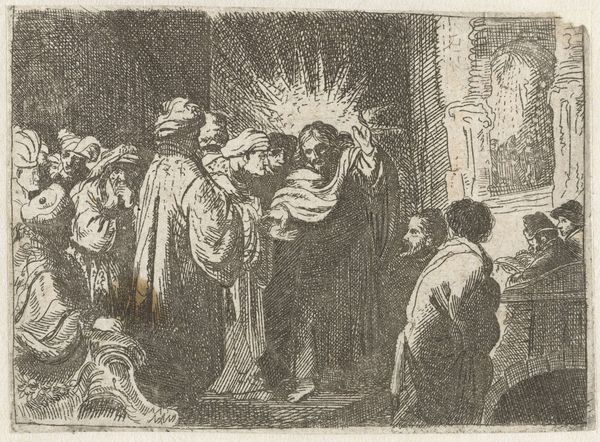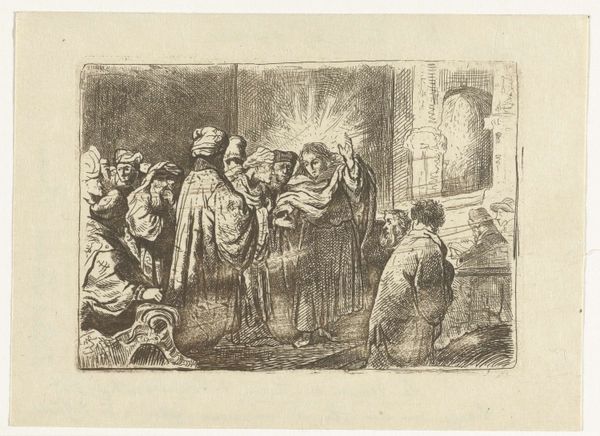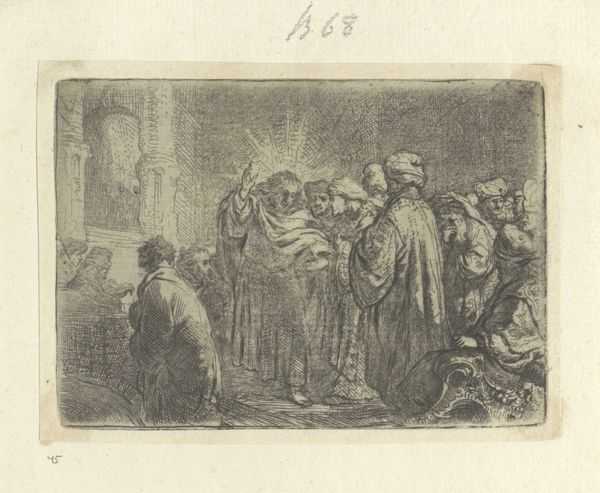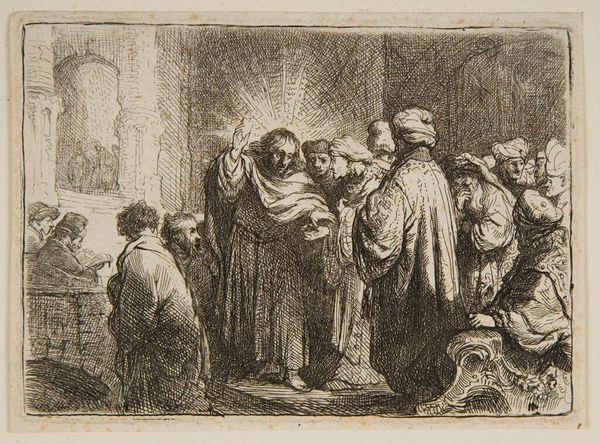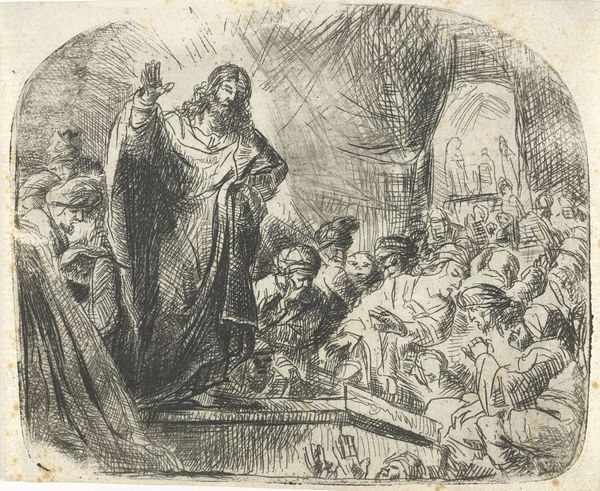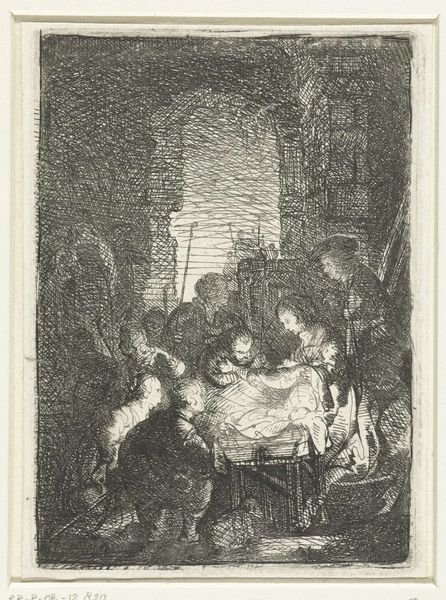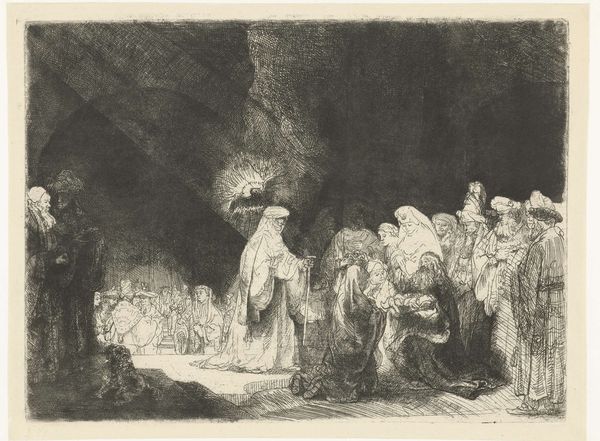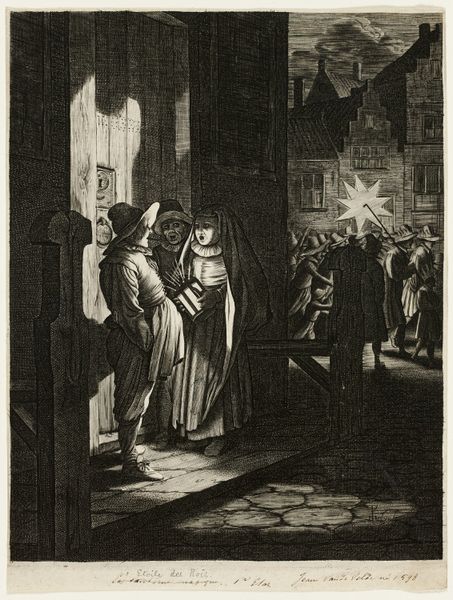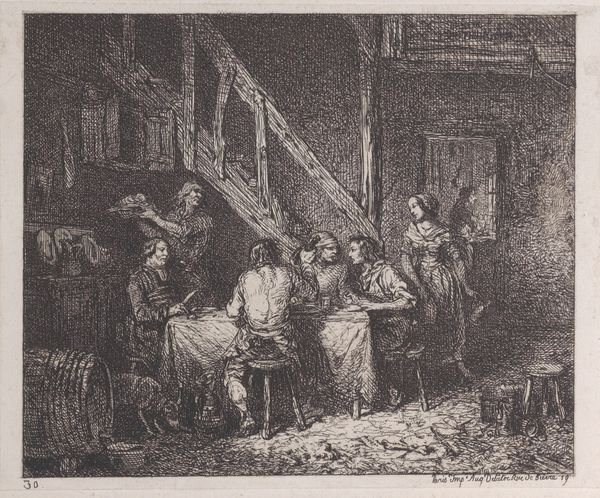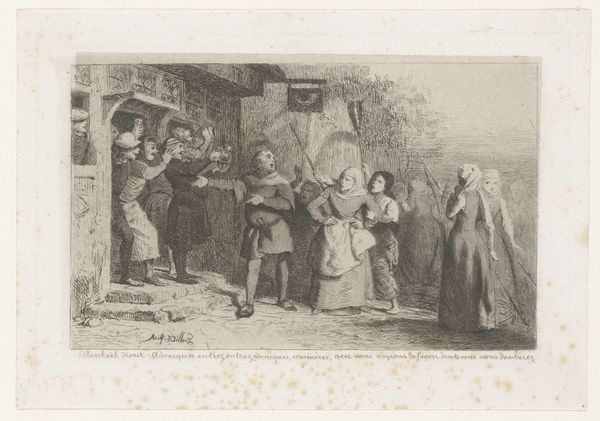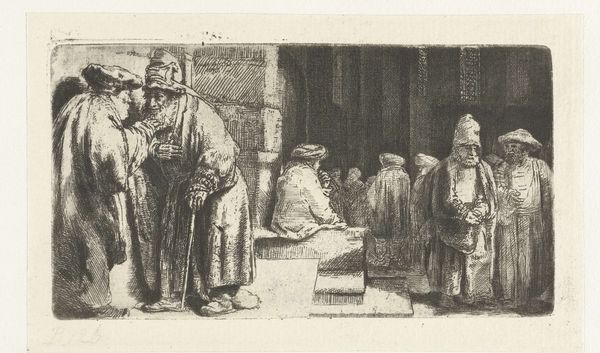
Dimensions: height 72 mm, width 101 mm
Copyright: Rijks Museum: Open Domain
Rembrandt van Rijn created "The Tribute Money" using etching, a printmaking technique known for its intricate detail. The process begins with a metal plate, usually copper, coated with a waxy, acid-resistant substance. Rembrandt then drew into this coating with a sharp needle, exposing the metal. Immersing the plate in acid would bite into the drawn lines, creating grooves. The longer the plate remained in the acid, the deeper the lines became, thus controlling the darkness in the final print. Ink was then applied to the plate, filling the etched lines. The surface was wiped clean, and the image transferred to paper under high pressure using a printing press. This painstaking process reflects a remarkable labor investment. Each print required careful preparation and precise execution, speaking volumes about the value placed on craftsmanship. Considering the materials and making involved, we gain a deeper appreciation for Rembrandt's artistry, challenging any distinction between this print and other art forms.
Comments
No comments
Be the first to comment and join the conversation on the ultimate creative platform.
